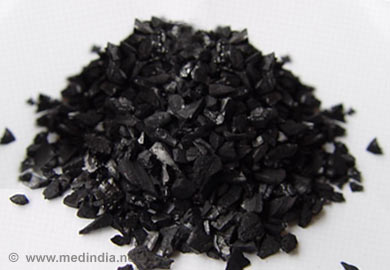- Activated Charcoal and How It Works - (http://chemistry.about.com/od/chemistryfaqs/f/charcoal.htm)
- Activated Charcoal information from DrugsUpdate - (http://www.drugsupdate.com/generic/view/911)
About
Have you wondered how the leftover charcoal after a bonfire has been used by scholars and doctors to treat their patients? You might have seen your elders who grew up in villages rub charcoal on their teeth every morning instead of commercial toothpaste and you must have found it strange. Actually, a piece of charcoal works better than the colored and flavored toothpastes available today, and has served other purposes for quite a long time. The charcoal, that has been processed with steam activation is called as activated
A chemist in the year 1813 surprised everyone when he swallowed five grams of arsenic trioxide poison that was mixed with charcoal with no adverse effect. This mysterious property of charcoal was discovered around 1500 B.C. by the Egyptians and since then it has been part of industrial and medicinal purposes. An activated carbon is potent in absorbing any gas or fluid most effectively compared to other natural products.
- Drug Overdose
- Bad Breath
- Foul Odors
- Food Poisoning
- Diarrhea
- Indigestion
- Nausea and Vomiting
- Bee Stings

There is an old history behind the discovery of activated carbon. The first recorded use of this miraculous product was in 1500 B.C. when the Egyptians used them to absorb foul odor from the putrefying parts within the intestinal tract. In the second century A.D. Claudius Galen, the most famous doctor of the Roman Empire famous for his spirit of scientific experimenting produced 500 medical treatments using charcoal from both animal and plant origin to cure many medical conditions.
Later in 1700’s, the charcoal emerged again and was used for absorbing excessive bile secretions in the body. By the mid of 1800’s, the charcoal was prominently used by the army and navy surgeons to relieve their soldiers from different types of open cancer and for soothing pain. Charcoal was admitted in the London Pharmacopoeia for the general use of army and naval military hospitals and civil hospitals.
By 1900’s the medical world realized the potential of activated carbon and started exploring its other applications. One such treatment was found by doctors for women who underwent abortions. The activated carbon is effective in lowering the fevers associated with septic endometritis in women who had an abortion. The ‘charcoal pencils’ were inserted through the cervix into the uterus to absorb all offending toxins and bacteria in the uterine cavities and the temperature fell to normal in the patients in 24 hours. It was observed that as soon as the ‘charcoal pencils’ were inserted inside their uterus, it resulted in an immediate end of foul-smelling discharge.
In the much advanced 21st century, the activated carbon disappeared from the market, but still holds its position in hospitals and medical research laboratories. Today, the activated carbon is an indispensable fixture in almost every modern hospital in the world. From simple equipment's such as gas masks and filters to the air scrubbers, kidney and liver dialysis machines, breast cancer surgery markers, wound dressings to drug poisoning, the diversity continues to grow as the time passes and the technology develops.






